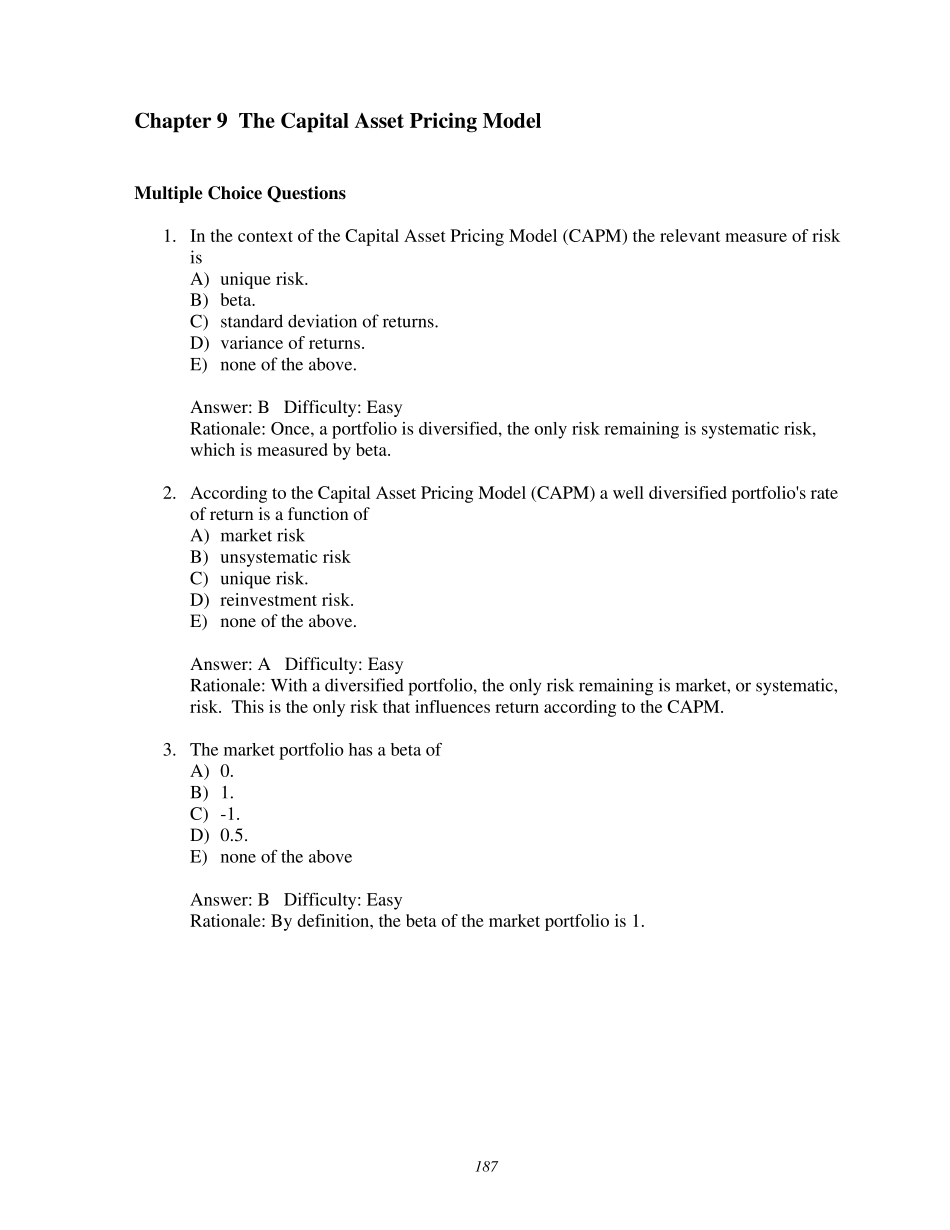Chapter 9 The Capital Asset Pricing Model 1 8 7 Mu ltiple Choice Qu estions 1. In the context of the Capital Asset Pricing Model (CAPM) the relevant measure of risk is A) unique risk. B) beta. C) standard deviation of returns. D) variance of returns. E) none of the above. Answer: B Difficulty: Easy Rationale: Once, a portfolio is diversified, the only risk remaining is systematic risk, which is measured by beta. 2. According to the Capital Asset Pricing Model (CAPM) a well diversified portfolio's rate of return is a function of A) market risk B) unsystematic risk C) unique risk. D) reinvestment risk. E) none of the above. Answer: A Difficulty: Easy Rationale: With a diversified portfolio, the only risk remaining is market, or systematic, risk. This is the only risk that influences return according to the CAPM. 3. The market portfolio has a beta of A) 0. B) 1. C) -1. D) 0.5. E) none of the above Answer: B Difficulty: Easy Rationale: By definition, the beta of the market portfolio is 1. Chapter 9 The Capital Asset Pricing Model 1 8 8 4. The risk-free rate and the expected market rate of return are 0.06 and 0.12, respectively. According to the capital asset pricing model (CAPM), the expected rate of return on security X with a beta of 1.2 is equal to A) 0.06. B) 0.144. C) 0.12. D) 0.132 E) 0.18 Answer: D Difficulty: Easy Rationale: E(R) = 6% + 1.2(12 - 6) = 13.2%. 5. The risk-free rate and the expected market rate of return are 0.056 and 0.125, respectively. According to the capital asset pricing model (CAPM), the expected rate of return on a security with a beta of 1.25 is equal to A) 0.1225 B) 0.144. C) 0.153. D) 0.134 E) 0.117 Answer: A Difficulty: Easy Rationale:...


